If you’re struggling with stubborn, acne-like bumps on your skin, it might not be regular acne—it could be fungal acne. This condition is more common than you might think and requires a different approach than regular acne.
An effective skincare routine targeting fungal acne can significantly improve the clarity and health of your skin. By using specialized products designed to combat the fungus, such as antifungal cleansers and treatments, you can reduce inflammation and prevent future breakouts.
Consistently following a fungal acne skincare routine helps restore your skin’s natural balance and promotes a clearer, healthier complexion. Proper management of fungal acne through targeted skincare is essential for long-term skin health and confidence.
In this guide, we’ll walk you through the best fungal acne skincare routine, helping you select budget-friendly products and providing useful tips for maintaining clear skin.
Table of Contents
What Is Fungal Acne?
Fungal acne, also known as Malassezia folliculitis, is a skin condition caused by the overgrowth of yeast in hair follicles.
While regular acne occurs due to clogged pores from oil and dead skin cells, fungal acne arises from an imbalance in the natural yeast present on your skin.
This results in small, itchy bumps that often appear on the forehead, chest, back, and shoulders, causing discomfort and frustration. These bumps are characteristic of fungal acne and can be mistaken for regular pimples, making it important to recognize the signs early.
Following a proper fungal acne skincare routine can help effectively manage and reduce these outbreaks. Incorporating the right products and habits tailored for fungal acne is essential for clear, healthy skin.
Key Signs of Fungal Acne
• Small, uniform bumps that look similar to whiteheads or pustules
• Itchy skin, especially when exposed to moisture or sweating
• Red, inflamed areas that tend to appear in clusters
• Usually appears on oily regions like the forehead, back, chest, and shoulders
How Can You Tell If Your Acne Is Fungal?
Fungal acne can easily be mistaken for regular acne, but there are a few key signs that can help you differentiate between the two. Unlike typical acne, fungal acne often presents as small, uniform, itchy bumps without blackheads or whiteheads.
These bumps tend to appear more on the forehead, chest, back, and shoulders, and may worsen with certain skincare products. Recognizing these differences is crucial for adopting the right fungal acne skincare routine and effectively treating the condition.
Visual Differences
• Regular acne tends to be larger and often comes with blackheads, cysts, or pustules, while fungal acne consists of smaller, uniform bumps.
• Fungal acne often causes itching and tends to appear in clusters, unlike regular acne which usually appears sporadically.
Common Symptoms
• Inflamed red bumps with visible whiteheads
• Bumps may occur more often in areas that sweat more frequently.
• Pimples that don’t respond to typical acne treatments
Common Causes of Fungal Acne
Fungal acne develops when the Malassezia yeast on your skin grows excessively, leading to inflamed, itchy bumps. This overgrowth of Malassezia yeast can occur due to various reasons, such as increased sweating, use of oily or pore-clogging skincare products, antibiotics, or a humid climate.
Understanding the causes of fungal acne is essential for implementing an effective fungal acne skincare routine. Addressing these factors can help prevent outbreaks and promote healthier, clearer skin.
Overuse of Oily Skincare Products
• Applying heavy oils and greasy skincare products can foster an ideal environment for Malassezia yeast to flourish.
Hot and Humid Weather
• Fungal acne often flares up in warm, humid environments, making it more likely to occur during summer months or in areas with high humidity.
Sweating and Tight Clothing
• Tight clothing that retains sweat and moisture against the skin can promote the growth of fungal acne.
Weak Immune System
• A weakened immune system can increase your vulnerability to fungal infections. This can be due to stress, illness, or certain medications that compromise immune function.

How Can You Get Rid of Fungal Acne?
When treating fungal acne, it’s important to use antifungal medications instead of standard acne treatments to effectively address the condition. Incorporating a proper fungal acne skincare routine can help prevent flare-ups and promote clearer skin.
Using the right products designed specifically for fungal acne ensures you target the root cause without aggravating the condition. Always consult a dermatologist to develop a personalized fungal acne skincare routine for the best results.
1. Use a Medicated Cleanser
• A medicated antifungal cleanser that contains ingredients like ketoconazole or selenium sulfide will help reduce the yeast overgrowth. These ingredients specifically target the Malassezia yeast.
2. Exfoliate Gently
• Chemical exfoliants like salicylic acid are effective for breaking down oil and dead skin cells without clogging pores. Be careful not to over-exfoliate, as excessive exfoliation can irritate the skin and potentially exacerbate fungal acne.
3. Apply Antifungal Treatment
• After cleansing, apply an antifungal treatment such as a topical cream or gel with clotrimazole, miconazole, or ketoconazole to reduce the growth of yeast on your skin.
4. Avoid Heavy Moisturizers
Avoid moisturizers that are too thick or oily. Instead, opt for lightweight, non-comedogenic options that will hydrate the skin without exacerbating fungal growth.
What Is the Typical Duration for Clearing Fungal Acne?
The duration for resolving fungal acne varies based on the severity of the condition and the effectiveness of your fungal acne skincare routine. Most people can see noticeable improvements within 2-4 weeks of consistent treatment with antifungal medications and appropriate skincare practices.
Patience and adherence to your routine are key to successfully clearing fungal acne and preventing future breakouts. Remember to consult a dermatologist to tailor your fungal acne skincare routine for optimal results.
Factors Influencing Treatment Time
• The severity of fungal acne
• How often you apply your antifungal treatments
• Whether you steer clear of triggers such as heavy oils or tight clothing
Tips for Speeding Up Healing
• Use antifungal treatments consistently and avoid skipping days.
• Avoid scratching or picking at your skin, as this can make the problem worse and cause scarring.
• Give products time to work—don’t switch to a new treatment too quickly if you don’t see immediate results.
Treating Various Types of Acne
It’s important to note that fungal acne requires a different treatment approach than other types of acne. Using antifungal medications and avoiding comedogenic or oil-based products are essential components of an effective fungal acne skincare routine.
Recognizing the differences between fungal acne and bacterial acne ensures you choose the right therapies for faster and more effective healing. Consulting a dermatologist can help you develop an appropriate fungal acne skincare routine plan tailored to your skin’s needs. Here’s a comparison:
1. Fungal Acne vs. Cystic Acne
• Cystic acne occurs deep within the skin and often requires oral antibiotics or retinoids for treatment. Fungal acne, on the other hand, is treated with topical antifungals like ketoconazole.
2. Fungal Acne vs. Hormonal Acne
• Hormonal acne is often caused by hormonal fluctuations, resulting in the formation of deep, painful cysts. Treatments may include oral contraceptives, spironolactone, or topical retinoids.
3. Fungal Acne vs. Comedonal Acne
• Comedonal acne results from blocked pores, and treatment typically involves the use of salicylic acid or benzoyl peroxide. Fungal acne requires antifungal treatment to help regulate the yeast levels on your skin.
4. Fungal Acne vs. Inflammatory Acne
• Inflammatory acne is characterized by red, swollen pimples, often treated with antibiotics. Fungal acne, however, responds better to antifungal products rather than antibiotics.
The Best Fungal Acne Skincare Routine
A successful skincare routine for fungal acne should consist of the following steps: using antifungal cleansers to eliminate the fungus, applying non-comedogenic moisturizers to keep the skin hydrated without clogging pores, incorporating topical antifungal treatments as prescribed by your dermatologist, and avoiding oil-based or greasy products that can exacerbate fungal growth.
Consistency and gentle, targeted products are key to managing and clearing fungal acne effectively. Following this fungal acne skincare routine can help restore healthy skin and prevent future outbreaks.
Step 1: Cleanse
• Start with a gentle antifungal cleanser that targets the Malassezia yeast. Avoid using harsh cleansers that could irritate your skin.
Step 2: Exfoliate
• Chemical exfoliation with salicylic acid or glycolic acid can help clear dead skin cells without clogging pores.
Step 3: Apply Antifungal Treatment
• Use an antifungal cream or serum containing ingredients like ketoconazole or clotrimazole to treat the yeast overgrowth.
Step 4: Moisturize
• Even with fungal acne, maintaining proper hydration is important for overall skin health. Choose lightweight, oil-free moisturizers to keep your skin hydrated without exacerbating the issue.
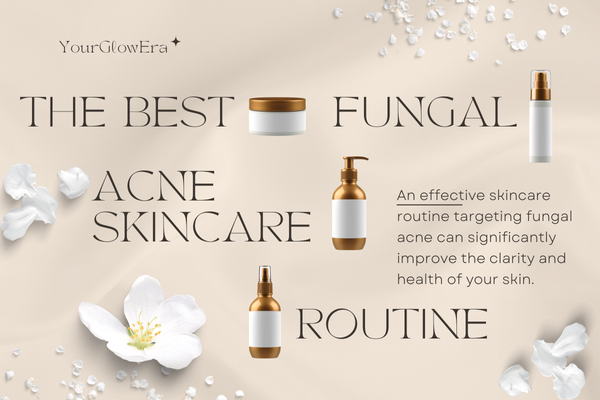
Budget-Friendly Products for Fungal Acne
There are many affordable products available that can effectively help treat fungal acne. Look for over-the-counter antifungal options such as ketoconazole shampoos or topical creams that are accessible and budget-friendly.
Incorporating these Fungal Acne Treatment Products into your fungal acne skincare routine can provide relief without the need for expensive prescriptions.
Choosing the right affordable options ensures that effective fungal acne management is accessible to everyone, promoting healthier skin without breaking the bank. Here are some recommendations:
1. Nizoral Anti-Dandruff Shampoo
• Nizoral is a popular shampoo containing ketoconazole, an effective antifungal agent that can be used as a face wash to help treat fungal acne.
2. The Ordinary Niacinamide 10% + Zinc 1%
• This affordable serum helps regulate oil production, which can be particularly useful for fungal acne-prone skin.
3. CeraVe Foaming Facial Cleanser
• This gentle, non-irritating cleanser helps to cleanse the skin without disrupting its natural barrier.
4. Selsun Blue Medicated Shampoo
• Another option containing selenium sulfide, Selsun Blue helps control fungal growth on the skin.
Lifestyle Tips to Prevent Fungal Acne
In addition to skincare, making specific lifestyle adjustments can help prevent flare-ups of fungal acne.
1. Keep Your Skin Dry
• Shower immediately after sweating, and wear breathable, moisture-wicking fabrics to keep your skin dry and free from fungus.
2. Avoid Tight Clothing
• Wearing tight clothing can trap sweat and moisture against the skin, creating an environment conducive to the growth of fungal acne.
3. Avoid Oily Skincare Products
• Switch to oil-free, non-comedogenic products that won’t contribute to fungal growth.
4. Stay Hydrated
• Drinking plenty of water is essential for maintaining healthy, balanced skin.
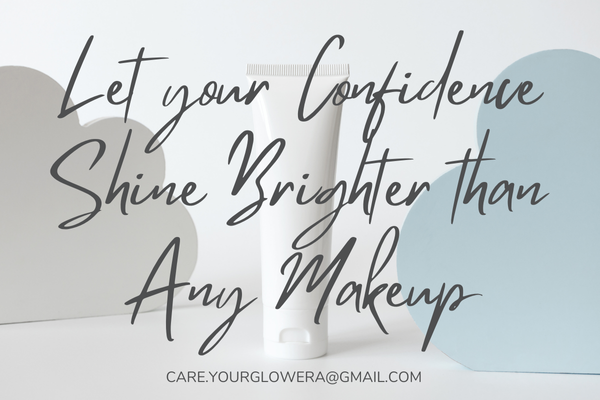
Conclusion: The Key to Clear Skin
A well-designed skincare routine targeting fungal acne is crucial for achieving clear and healthy skin. By using antifungal treatments, maintaining good hygiene, and making appropriate lifestyle changes, you can effectively control fungal acne and reduce the risk of future breakouts.
Keep in mind that patience and consistency are essential for seeing lasting results. Fungal acne can take time to heal, but with consistency and the right approach, you can achieve smoother, healthier skin.
Ultimately, the goal is to maintain a balanced environment on your skin, avoiding factors that promote yeast overgrowth, while supporting your skin’s natural health.
Whether you’re dealing with mild fungal acne or a more persistent issue, the right fungal acne skincare routine combined with lifestyle adjustments can help clear your skin in the long run.
Stick to the routine, use the right products, and give yourself time—soon, you’ll be able to enjoy the benefits of clear, glowing skin.
Struggling to find the perfect skincare routine for your combination skin? Our ultimate guide offers expert tips, practical tricks, and must-have products to help you achieve a balanced and glowing complexion.
Whether you’re dealing with oily zones or dry patches, this comprehensive article provides tailored advice to meet your skincare needs. Read the full guide on “The Ultimate Guide to the Best Skincare Routine for Combination Skin: Tips, Tricks, and Must-Have Products“ to discover everything you need for radiant skin.
For detailed insights and product recommendations that suit your unique skin type, be sure to check out the complete article at “The Ultimate Guide to the Best Skincare Routine for Combination Skin: Tips, Tricks, and Must-Have Products“ and start your journey toward healthier, more balanced skin today!
Frequently Asked Questions
1. What skin type is prone to fungal acne?
Oily skin is more prone to fungal acne, as excess sebum can provide a food source for Malassezia yeast.
2. What kills fungus completely?
Antifungal treatments containing ketoconazole, clotrimazole, or terbinafine are effective at killing fungal infections.
3. Does fungal acne get worse before better?
Yes, in some cases, fungal acne may seem to worsen initially as the fungal acne skincare routine works to reduce the yeast population, but it should improve over time.
4. What pH kills fungus?
Fungi typically thrive in neutral to slightly alkaline environments. Keeping the skin’s pH slightly acidic (around 4.5 to 5.5) can help prevent fungal overgrowth.
5. What kills fungal acne fast?
Antifungal creams or shampoos like ketoconazole or selenium sulfide, used consistently, can help kill fungal acne quickly when incorporated into your fungal acne skincare routine.
6. Is salicylic acid antifungal?
Salicylic acid is not antifungal. It is a beta hydroxy acid (BHA) that helps with exfoliation and oil control but doesn’t directly target fungal acne.
7. Is hyaluronic acid good for fungal acne?
Yes, hyaluronic acid is great for keeping the skin hydrated without feeding the fungus, making it ideal for fungal acne skincare routine.
8. How to get rid of skin fungus permanently?
Consistent use of antifungal treatments, proper skincare, and avoiding triggers can help prevent recurring fungal infections.
9. Why does my fungal acne keep coming back?
Fungal acne can come back if the triggers—like sweating, using oily products, or not completing the treatment—are still present.
10. How do I know if my fungal skin infection is healing?
When your fungal acne starts to flatten, reduce in size, and the inflammation decreases, it’s a sign that healing is taking place.

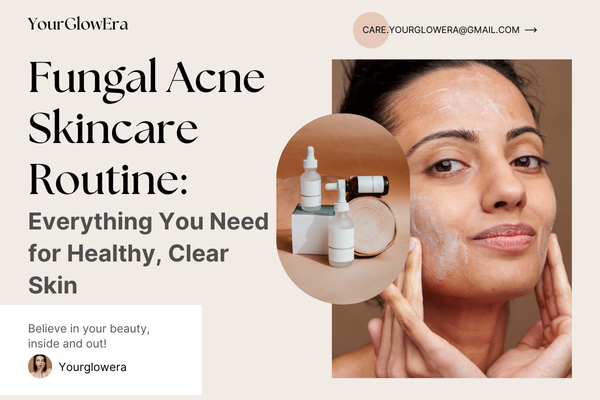
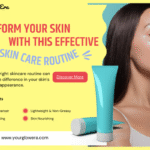
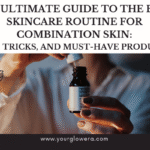



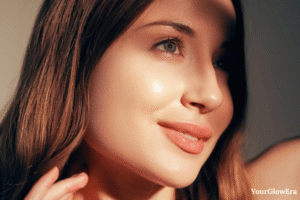
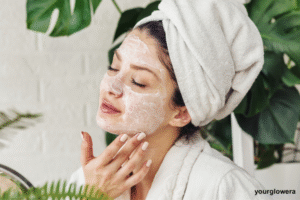
Leave a reply